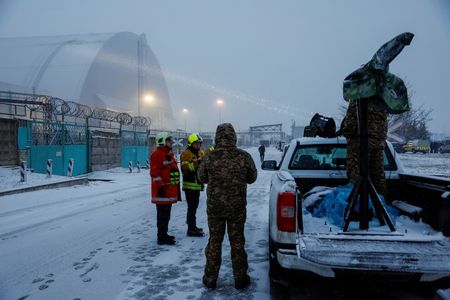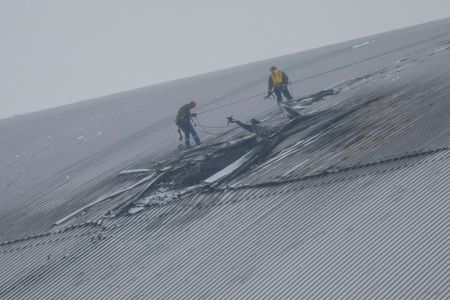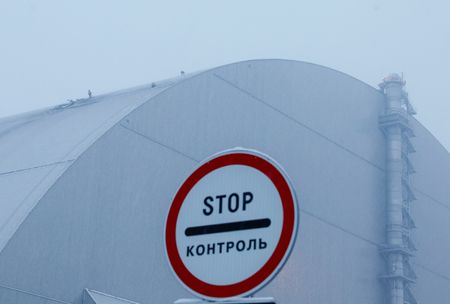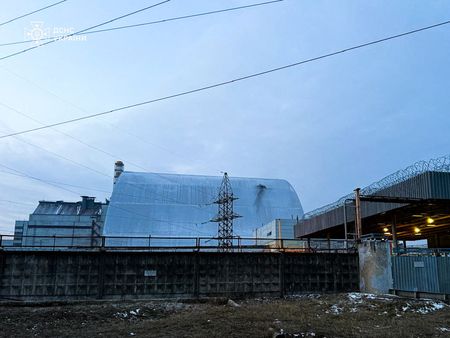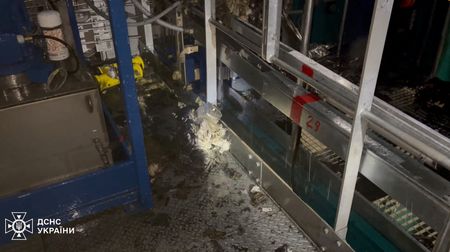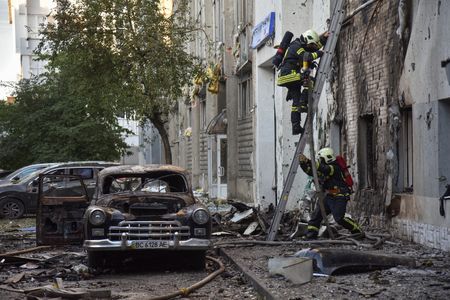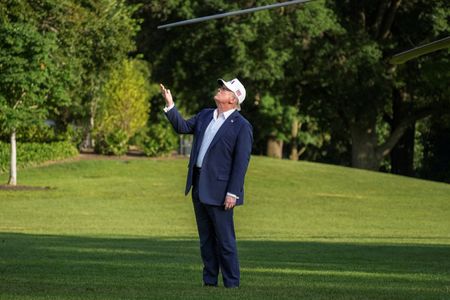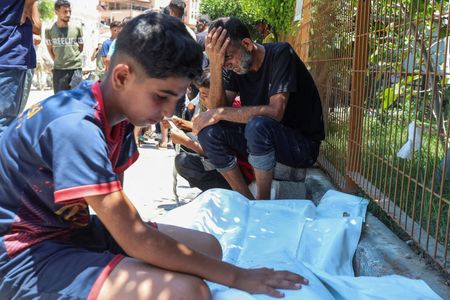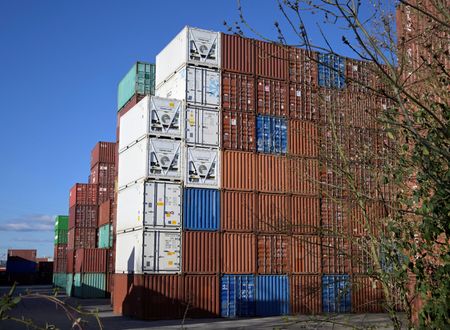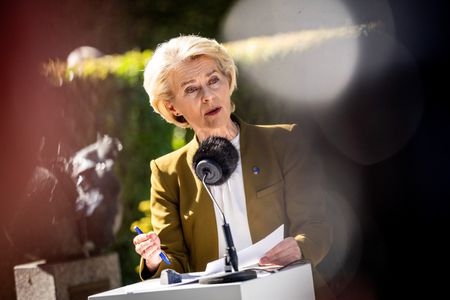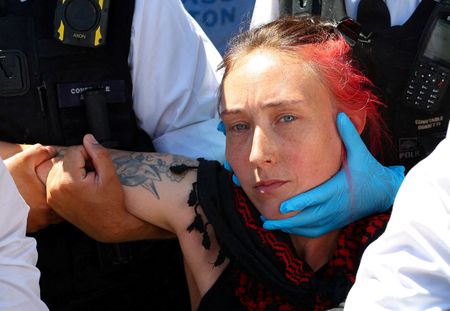By Max Hunder and Anastasiia Malenko
KYIV (Reuters) – Ukrainian President Volodymyr Zelenskiy said on Friday that a Russian drone had caused significant damage to the radiation containment shelter at the disused Chornobyl nuclear power plant overnight.
Zelenskiy and the U.N.’s atomic energy watchdog both said that radiation levels remained normal after the incident, which came as top U.S., Ukrainian and European officials gathered at the Munich Security Conference to discuss the war in Ukraine.
The Chornobyl station’s chief engineer, speaking to reporters at the site, said a drone had exploded inside and damaged the structure meant to keep radiation from spreading.
Maria Zakharova, spokeswoman for the Russian Foreign Ministry, accused Zelenskiy of orchestrating a drone attack to coincide with the Munich event as part of a lobbying effort to secure more weapons and money from the West.
Chornobyl was the site of the world’s worst civil nuclear catastrophe when one of its four reactors exploded in 1986. That reactor is now enclosed by a shelter to contain the lingering radiation.
Chornobyl’s last working reactor shut in 2000. Russia occupied the plant and the surrounding area for more than a month during its push to take the Ukrainian capital Kyiv at the beginning of the invasion.
The drone struck the radiation shelter, causing a fire that was then extinguished, Zelenskiy wrote on the Telegram app.
“According to initial assessments, the damage to the shelter is significant,” he said.
Chernobyl’s chief engineer, Oleksandr Tytarchuk, said emergency crews were working to minimise the aftermath of the incident.
“The barrier which was supposed to prevent the spread of radioactive substances has ceased to function according to its original design,” Tytarchuk told reporters at the plant.
He said the drone “hit the outer cover, pierced it, fell into the system and exploded there.” Had the explosion occurred 15-20 metres (50-65 feet) further away, he said, “it would have directly hit the old shelter, which is 40 years old”.
Ukraine’s SBU security service showed pictures of what it said was the drone, which it said had been carrying a high-explosive warhead.
It said the drone was a Geran-2, the Russian name for the Iranian-designed Shahed-136, and had been intended to hit the reactor enclosure.
Marcel Plichta, Fellow at the Centre for Global Law and Governance at the University of St Andrews in Scotland, said the visuals released by Ukraine almost certainly showed a Shahed-136.
“The warhead of these drones is usually around 30 kg (66 lb), which is notable because it means Russia can grab headlines by launching the attack, but probably wouldn’t cause large amounts of damage like you would see from a traditional missile,” he said.
“Russia frequently uses attacks like this to regain control of the narrative.”
IMAGES SHOW FIRE AT TOP OF CHORNOBYL RADIATION ENCLOSURE
Andriy Yermak, the Ukrainian president’s chief of staff, posted photographs that appeared to show a small fire near the top of the shelter, known as the New Safe Confinement.
The hulking, arched steel and concrete structure was completed in 2019 to cover an earlier Soviet-built version, which had deteriorated.
It is 108 metres high (354 feet) and 162 metres long, spans 257 metres and has a lifetime of at least 100 years, according to the European Bank of Reconstruction and Development.
It cost 1.5 billion euros ($1.6 billion) and was financed by 45 donor countries and institutions.
Zelenskiy told reporters in Munich that the drone had flown in below radar range, at a height of 85 metres.
The president held what he described as a “good meeting” with U.S. Vice-President JD Vance. The discussion comes at a delicate moment for Ukraine, with the new U.S. president, Donald Trump, pushing for rapid negotiations and an end to the war.
($1 = 0.9544 euros)
(Reporting by Max Hunder and Anastasiia Malenko, additional reporting by Yurii Kovalenko, Milan Pavcic; Editing by Alex Richardson, Tom Balmforth, Sharon Singleton, Ron Popeski and Alistair Bell)

